- An oil stove burning the waste oil: Innovation of the month June 9, 2022
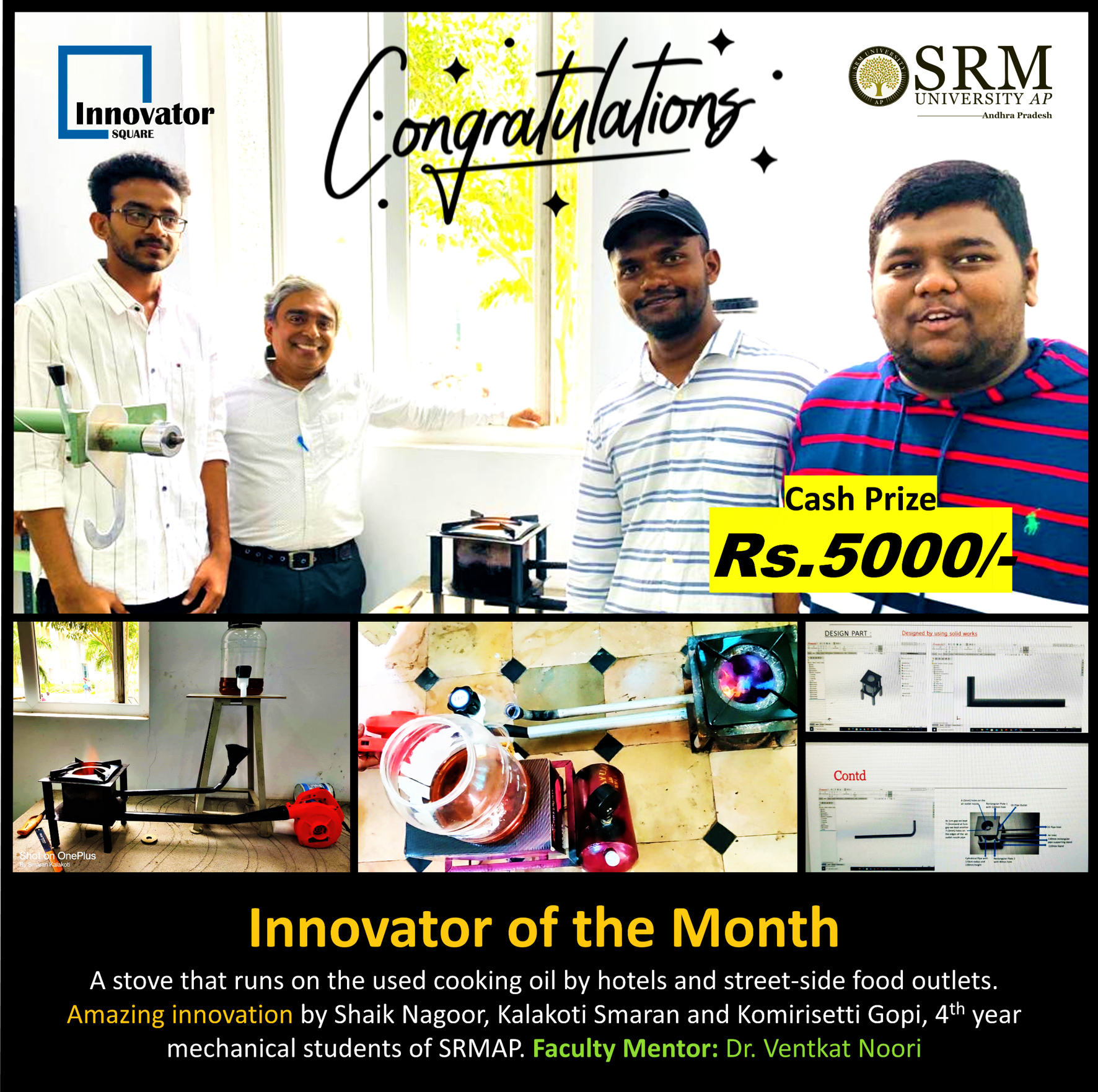
Innovation is seeing what everybody has seen and thinking what nobody has thought.
-Dr Albert Szent-Gyorgyi
The uncompromising vision to mould the students to be the leaders of tomorrow and to gear them up to think beyond the possible has been the propelling factor that drives each student of SRM University-AP to tread the unexplored paths and embrace the unseen challenges. They come out as transformed individuals, outgrown with enriching experiences, capable of introducing new changes into the world. Students are offered ample space and time to ideate, innovate, and build themselves into coming-of-age professionals.
Innovator Square is one such platform set up by the Entrepreneurship-cell to nurture innovative ideas and thoughts having the potential to be converted into a meaningful product or service. Each month, it brings out young talents who have expanded their limits to fashion out an unforeseen solution to the mundane troubles of society. The title winners of the ‘Innovator of the Month’ contest this time, are, Shaik Nagoor, Kalakoti Smaran, and Komirisetti Gopi, from the Department of Mechanical Engineering. They have designed a special stove that runs on used cooking oil.
Introducing innovations out of bits and pieces of the commonest of things adds value to our everyday lives. These budding masterminds deserve acknowledgement for their incredible solution to utilise the leftover oil. Cooking oil is a daily essential abundantly used in food processing industry, such as restaurants and fast food, as well as in households. Reusing the oil is found to have harmful effects as it contains carcinogenic substances, that may lead to cancer or other chronic health disorders. Hence the common practice followed is to dump it in open soil. However, this will affect soil fertility and a myriad of environmental concerns.
Their motive to offer a sustainable solution to this menace is what prompted them to devise a user-friendly stove that will consume the used cooking oil. This will also serve as a better alternative to LPG, saving up to 50% of the expenditure. The students expressed their happiness in having made their tiny share of contribution for the well-being of their society. They also thanked their faculty and the university for extending unswerving support to complete this project. “We can never thank enough Dr Venkata Nori sir for guiding and supporting us from the beginning of our project, he helped us achieve this innovation, we are also thankful to Mr Udayan Bakshi sir for helping us to build a start-up”, they remarked.
Continue reading → - Recasting high-entropy alloys for enhanced performance June 9, 2022
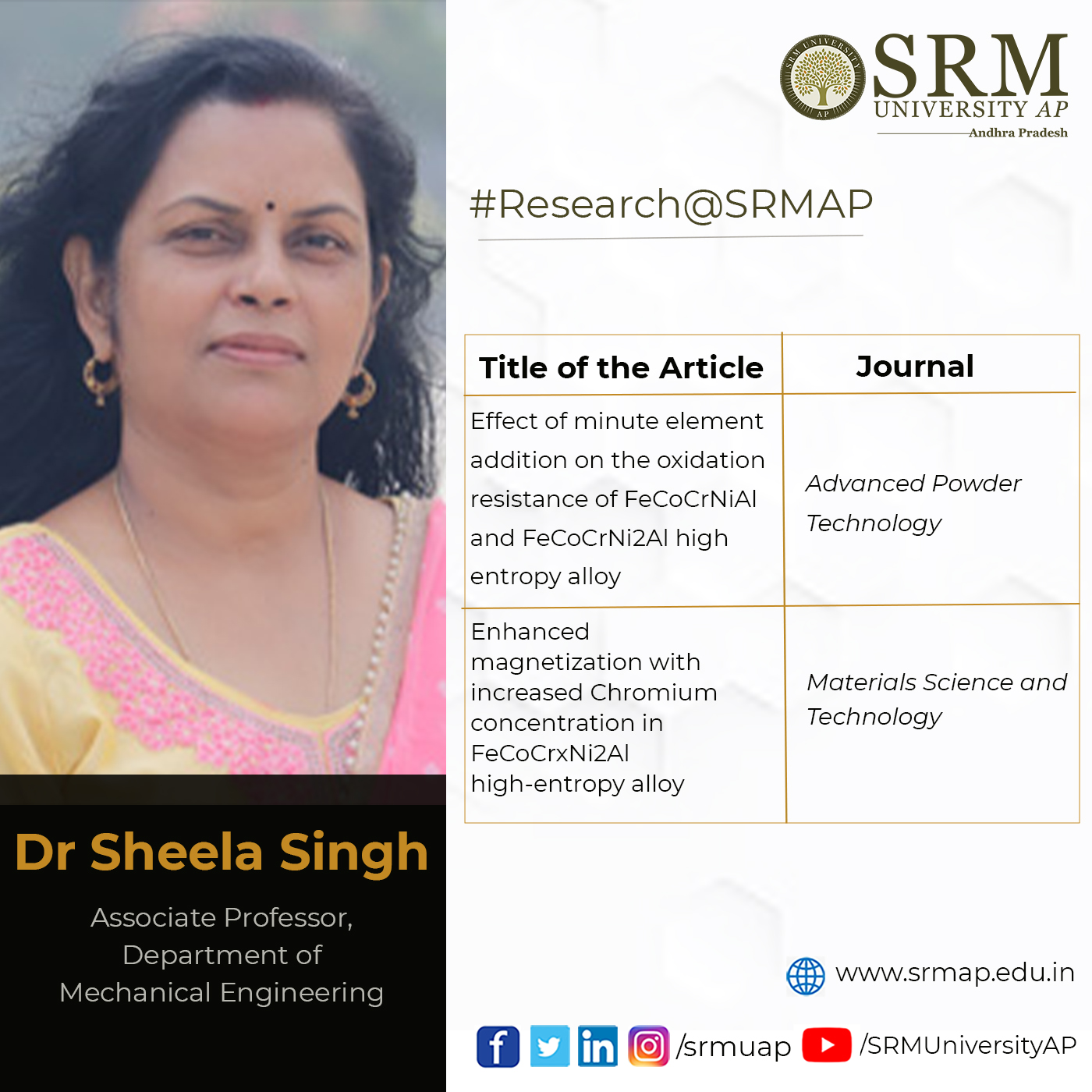
High-entropy alloys (HEAs) are gaining research significance in recent times as they propose novel alloy designs and concepts demonstrating better performance. HEAs constitute multiple principal elements in varying concentrations and combinations to produce new materials with excellent physical properties and superior performance at extreme temperature conditions. Recent studies have brought out a few high-entropy alloys possessing exceptional properties, even capable of challenging the existing theories and models for conventional alloys. However only very little has been explored within this multidimensional space leaving limitless possibilities to be explored and materialized.
Dr Sheela Singh, from the Department of Mechanical Engineering, has been conducting rigorous research in this domain and she has published research articles proposing novel ideas to tweak the properties of HEAs. In one of the articles co-authored by Dr Sheela, “Effect of minute element addition on the oxidation resistance of FeCoCrNiAl and FeCoCrNi2Al high entropy alloy”, published in the journal Advanced Powder Technology, she investigates the effect of Ti0.1 and Ti0.1Si0.1 addition on the high-temperature isothermal oxidation behaviour of dense FeCoCrNiAl and FeCoCrNi2Al high entropy alloys.
Mechanical properties such as hardness & young’s modulus, thermal properties such as melting temperature, specific heat capacity and coefficient of thermal expansion (CTE) were investigated by Nano hardness tester (NHT), differential scanning calorimetry (DSC) and dilatometer, respectively. The phases present in the HEAs produced by hot vacuum pressing and after isothermal oxidation were characterized by X-ray diffraction, Scanning Electron Microscopy and Raman Spectroscopy.
The weight gain recorded after isothermal oxidation for 5,25,50 and 100 hours at 1050°C was found to be parabolic in nature. X-ray diffraction analysis (XRD), as well as Raman spectroscopy analysis of HEA’s oxidized at 1050°C for 100 hours, shows the formation of the Al2O3 phase. A homogeneous thin oxide scale without any discontinuity was observed throughout the cross-section. It has been confirmed that Ti & Si addition in minute amount (0.1 at. % each) improves the mechanical properties and oxidation resistance as well as reduces the waviness of the oxide scale.
Another article co-published by her, “Enhanced Magnetization with Increased Chromium Concentration in FeCoCrxNi2Al High-Entropy Alloy”, in Materials and Science Technology, reports the effect of increasing the concentration of antiferromagnetic element Cr in FeCoCrxNi2Al (x = 0.5, 1.5) High Entropy Alloy (HEA) on their magnetic properties. It was found that the structure and composition of different phases, and the likely degree of spinodal decomposition in the Cr-Fe rich BCC phase significantly affects the magnetic properties.
Interestingly, the sample with Cr concentration x=1.5 showed two times larger saturation magnetization as compared to x=0.5. Furthermore, the magnetization versus temperature response shows a multi-phase character and exhibits distinct behaviour in low temperature and high-temperature regimes in both samples. The obtained soft ferromagnetic behaviour of these HEAs is crucial for the development of a new class of HEA for various applications.
The considerable structural and functional potential, as well as the richness of design, make HEAs promising candidates for new applications prompting further studies in the field. There remains a vast compositional space that is yet to be discovered. New studies have to be initiated finding out effective ways to recognise regions within this space where high-entropy alloys with potentially interesting properties may be lurking. Dr Sheela’s research is a right step in this direction to pave the way for fruitful developments in the future.
Continue reading → - Ameliorated Follow the Leader: Algorithm and Application to Truss Design Problem June 9, 2022
Q1 journal publications of our faculty members always bring honour to SRM University-AP. Dr Priyanka Singh, Assistant Professor from the Department of Computer Science and Engineering has published a paper titled “Ameliorated Follow the Leader: Algorithm and Application to Truss Design Problem” in the journal Structures (Q1 journal) having an impact factor of 2.983.
Abstract
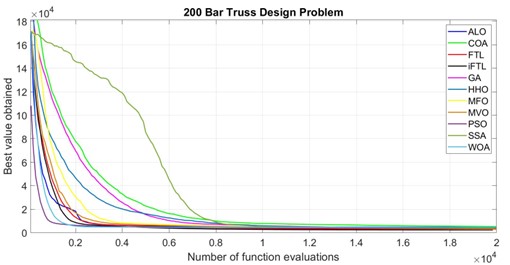 In the real world, resources, time, and money are always limited, necessitating the need for well-balanced algorithms. According to the “No-free-lunch” theorem, no single algorithm exists that works well in all applications. Hence, an optimisation algorithm with improved performance is always needed. The paper presents an improved follow the leader (iFTL) algorithm that imitates the behavioural movement of a sheep within the flock. The algorithm has been utilised to solve eight complex 10, 37, 52, 72, 120, 200, 224, and 942 bar truss design problems.
In the real world, resources, time, and money are always limited, necessitating the need for well-balanced algorithms. According to the “No-free-lunch” theorem, no single algorithm exists that works well in all applications. Hence, an optimisation algorithm with improved performance is always needed. The paper presents an improved follow the leader (iFTL) algorithm that imitates the behavioural movement of a sheep within the flock. The algorithm has been utilised to solve eight complex 10, 37, 52, 72, 120, 200, 224, and 942 bar truss design problems.Practical implications
The algorithm can be utilised to solve several structural and mechanical design problems such as bride design, antenna design, welded beam design, speed reducer, and many more. The algorithm is well suited for all types of real-life engineering problems where optimisation is required, from travel cost optimisation to optimisation of resources in the organisation under the given constraints and objective function.
Collaborators
1. Rahul Kottath (Computer Vision Engineer, Digital Tower, Bentley Systems India Private Limited, Pune, India)
2. Ghanshyam G. Tejani (Assistant Professor, Department of Mechanical Engineering, School of Technology, GSFC University, Vadodara, Gujarat, India)Future Research Plan
Currently, Dr Priyanka is exploring new engineering applications where optimisation techniques can be used. She is working on optimisation methods that can be utilised to classify microarray data, energy optimisation, and mechanical and structural design problems. In future, she plans to propose her work to the industrial level for the greater good and better solutions.
Continue reading → - Classical concert on Annamacharya Sankeertanas June 8, 2022
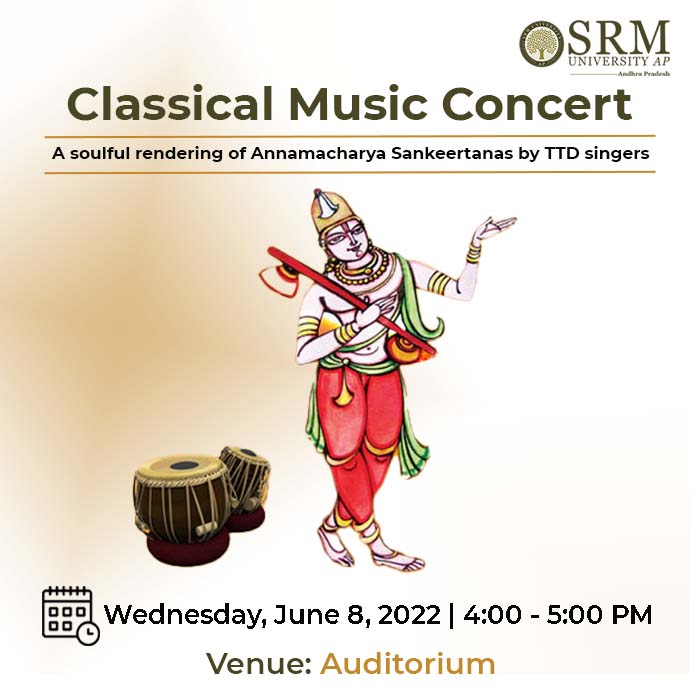
Tallapaka Annamacharya, popularly known as ‘Anamayya’, was a 15th-century saint and the earliest known Indian musician to compose songs called sankeertanas in praise of Lord Venkateswara. His compositions have strongly influenced the structure of Carnatic Music and are still making rounds in various music concerts and performances the world over.
Having composed countless odes to Sri Tirumala Venkateswara Swamy, Annamacharya is widely regarded as the Pada Kavitaa Pitamaha of Telugu poetry. He was a reputed singer and an eminent poet who gave life to the Telugu song and lyricism by blending the Telugu ‘Andhra Vedam’ for the easy understanding of the common man, with the summary of ‘Sanskrit Vedas’.
Tirumala Tirupati Devasthanams, also known as TTD, are on an endeavour to preserve the rich heritage of his compositions. They have set music to over 800 compositions of Annamacharya that have amassed wide popularity among the devotees. We are delighted to announce that the following TTD musicians will be offering a beautiful rendition of Annamacharya’s compositions at our university campus:
Mr M B Loganatha Reddy (Singer)
Mr Srinivasulu (Keyboard)
Mr Bujji (Tabla)
Mr Ramachandraiyya (Shruthi)
Lend your ears to their soothing and heart-warming performance.
Date: June 8, 2022
Time: 4.00 pm to 5.00 pm
Venue: Auditorium
- Computing Influential nodes in complex networks June 7, 2022
With its vast applications in the industry, computing influential nodes is becoming a popular research field in recent days. The Department of Computer Science and Engineering is delighted to inform you that the paper, Computing Influential Nodes Using Nearest Neighborhood Trust Value and Pagerank in Complex Networks have been published by Dr Murali Krishna Enduri, Assistant Professor, Dr Satish Anamalamudi, Associate Professor, and the PhD students; Koduru Hazarathaiah, Ms Srilatha Tokala in the Entropy Journal (Q2 Journal), with an impact factor 2.587.
Abstract
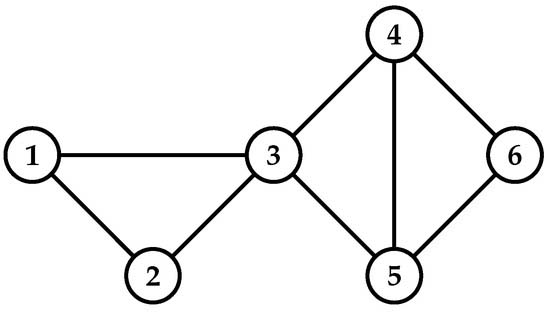 Computing influential nodes attract many researchers’ attention for spreading information in complex networks. It has vast applications such as viral marketing, social leaders, rumour control, and opinion monitoring. The information spreading ability of influential nodes is more compared with other nodes in the network. Several researchers proposed centrality measures to compute the influential nodes in the complex network, such as degree, betweenness, closeness, semi-local centralities, PageRank, etc. These centrality methods are defined based on the local and/or global information of nodes in the network. However, due to the high time complexity, centrality measures based on the global information of nodes have become unsuitable for large-scale networks. Very few centrality measures exist that are based on the attributes between nodes and the structure of the network. We propose the Nearest Neighbourhood Trust PageRank (NTPR) based on the structural attributes of neighbours and nearest neighbours of nodes. We define the measure based on the degree ratio, the similarity between nodes, the trust value of neighbours, and the nearest neighbours.
Computing influential nodes attract many researchers’ attention for spreading information in complex networks. It has vast applications such as viral marketing, social leaders, rumour control, and opinion monitoring. The information spreading ability of influential nodes is more compared with other nodes in the network. Several researchers proposed centrality measures to compute the influential nodes in the complex network, such as degree, betweenness, closeness, semi-local centralities, PageRank, etc. These centrality methods are defined based on the local and/or global information of nodes in the network. However, due to the high time complexity, centrality measures based on the global information of nodes have become unsuitable for large-scale networks. Very few centrality measures exist that are based on the attributes between nodes and the structure of the network. We propose the Nearest Neighbourhood Trust PageRank (NTPR) based on the structural attributes of neighbours and nearest neighbours of nodes. We define the measure based on the degree ratio, the similarity between nodes, the trust value of neighbours, and the nearest neighbours.Explanation of the research
The research computes the influential nodes on the various real-world networks by using the proposed centrality method NTPR. The researchers find the maximum influence by using influential nodes with SIR and independent cascade methods. They also compare the maximum influence of our centrality measure with the existing basic centrality measures.
Social implications
Viral Marketing is a business strategy that uses existing social networks to promote products. The influential nodes in complex networks can be found using the centrality measure and can be used as the seed nodes for promoting products in the social networks. A rumour is a statement being said without knowing if it is true or not. The rumours can be easily controlled by discovering influential nodes. The researchers look forward to finding a centrality measure to detect the influential nodes efficiently.
Continue reading →

